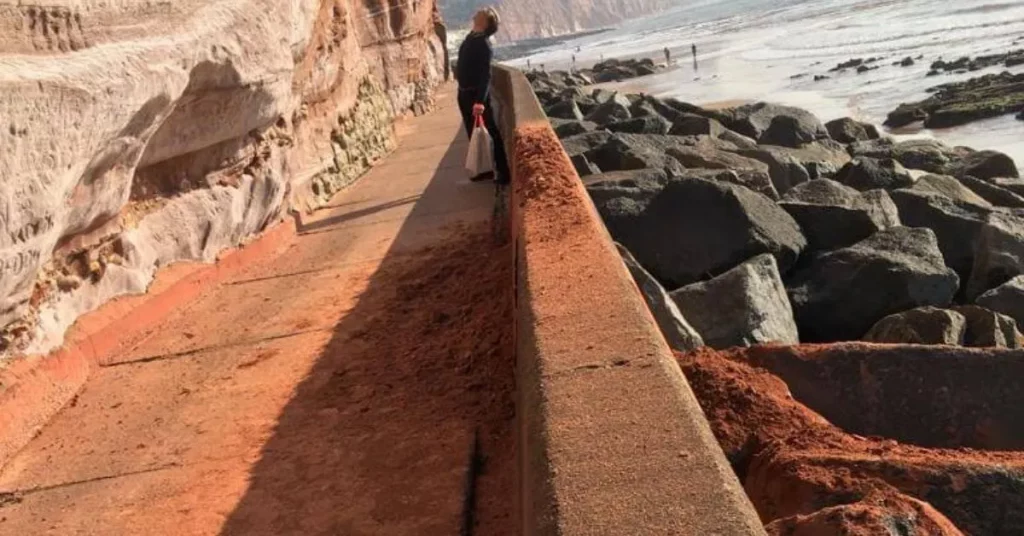“We are also seeing more coastal cliff collapses. Rising sea levels and heavier storms mean that once-stable sea cliffs are being undermined. We have robust data from coastal environments in the UK which demonstrate a significant increase in these kinds of landslides.”
.
The walkway between the main beach on the seafront and Jacob’s Ladder was closed off on Sunday:
Coastguards have cordoned off a section of Sidmouth beach following a rock fall. The Maritime and Coastguard Agency (MCA) were alerted by police to assist following reports of the latest collapse of the cliffs this morning, March 27. An MCA spokesperson said: “Our team from Beer Coastguard Rescue Team went and cordoned off the area to keep people safe.”
It was also confirmed that the local council had been informed and was going to put up fencing. Last summer there were five massive falls in one morning along the cliffs between Sidmouth and Salcombe Mouth. The area is infamous for dangerous cliff falls and signage at along the edge and on the beach advise visitors to keep well away from the area. In three weeks at the end of May and into June last summer, there were four separate cliff falls prompting safety warnings from the local coastguard.
Area of Sidmouth beach cordoned off after cliff fall – live updates – Devon Live

Cliff fall in Sidmouth prompts footpath closure because of ‘ongoing risk’ to public
The only problem is that it was not closed off well enough – or with enough explanation of why – as this comment on social media pointed out:
What a waste of time it is too, I was up on Connaught Gardens today and saw people walking along the cliff path in both directions. They just stepped over this tape and pushed past the barrier behind. There were no explanatory warning signs anywhere.
This is clearly going to be an ongoing issue – as the Engineering and Technology magazine pointed out earlier in the year:
Climate change and landslides: the slippery slope towards disaster?
There has been a marked rise in the number of recorded landslides in recent decades, and this is being linked to climate change. E&T explores how shifting weather patterns increase the risk of these events occurring, and how we might address the issue.
…
Researchers have detected a rise in the frequency of landslides in recent decades and this can, at least in part, be linked to climate change. To understand this link, and the technologies that might help address the problem, we first need to understand why landslides happen.
“Think about it like sand,” says Professor Jon Chambers, a geophysicist at the British Geological Survey (BGS). “When sand is damp, the moisture between the grains creates suctions,” which lets the material hold a shape. However, as anyone who’s built a sandcastle knows, if you add too much water that suction dissipates, and the shape cannot hold….
“The landscape in which we currently live has evolved to be in equilibrium with meteorological conditions,” explains Professor Dave Petley, a landslide expert at the University of Sheffield. For millennia, global weather patterns have remained relatively stable. However, those patterns are now changing fast. This in turn impacts on the landscape. We are also seeing more coastal cliff collapses. Rising sea levels and heavier storms mean that once-stable sea cliffs are being undermined. “We have robust data from coastal environments in the UK which demonstrate a significant increase in these kinds of landslides,” Petley notes….
Climate change and landslides: the slippery slope towards disaster? | E&T Magazine